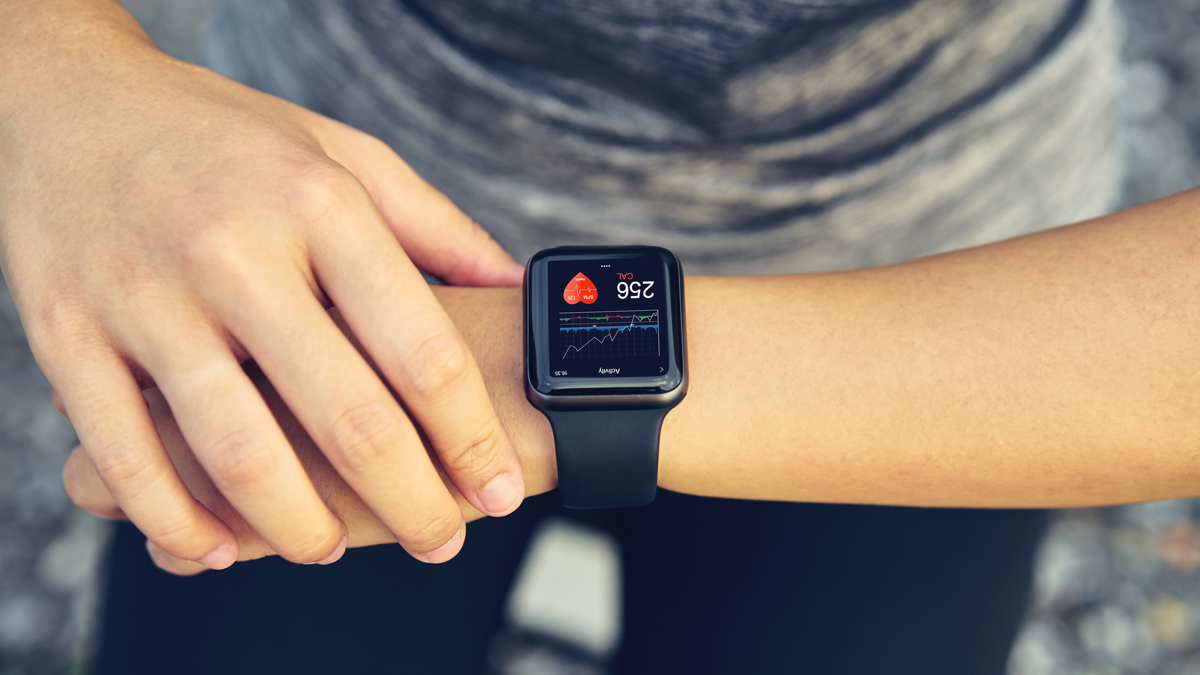New technology is now the beating heart of patient care

Patient care and healthcare provision have always appeared among society’s top priorities, but keeping people well came into sharp focus during the pandemic.
So, too, did the role of pharmaceutical companies - not least how amazing advances in medical science could help the world combat Covid, but also how the sector was remunerated for its efforts.
As we seek to move beyond the difficulties of the past few years, pharma firms now have the chance to make further advances and bring innovation to market and, in the process, gain competitive edge over their rivals.
The race is on
With an abundance of patient data to hand - GDPR compliance permitting - and cutting-edge technology to aid the development and delivery of new products, the race is on to escalate and improve patient care with solutions that can truly make a difference.
Patients aren’t blind to the tech-driven changes going on around them. We’ve been using wearable technology for decades already. Acceleration of this market really kicked in 20 years ago, when devices from Bluetooth headsets to smart watches came on-stream. Ever since, we seem to have been glued to screens to understand more about ourselves, tapping apps that promise to monitor everything from self-care to Circadian rhythms.
Wearables are becoming breakout technology in the pharma space, too. Biospace estimates the market for these types of devices that add to the patient care toolkit will grow from today’s $21.3bn to $196.5bn by 2030.
In effect, the possibilities are endless. We already have access to devices that monitor our heart rate and alert first responders if sensors detect a health crisis like a stroke or heart attack. Similar technology could be rolled out across society, accelerating critical treatment times.
Emergency response is the tip of the iceberg. All of the data produced by wearables - from blood sugar levels to monitoring changes in the menstrual cycle - can automatically be passed to frontline healthcare organisations, enabling professionals to read and appropriately respond.
Such tech is just one example of an area that is ripe with opportunity for pharma businesses. But there are lots of other exciting developments at our fingertips.
Biosimilars get the sector’s blood pumping
During the past few years, interest has been growing in biosimilars. If you’re unaware of these types of drugs, the NHS describes them as: “Biological medicines that have been shown not to have any clinical meaningful differences from the originator medicine in terms of quality, safety, and efficacy.”
Biosimilars are therefore biological medicines that are highly similar to another version already licensed for use, and they are now being recommended all the time. They are, of course, subject to the same NICE guidance as originator medicine it has already approved. NHS leaders believe biosimilars will create up to £300m of annual savings thanks to their speed of development, a timely saving in a challenging market that looks set to come under increasing financial pressure during the next few years.
Clinicians also note that the biosimilars market will rapidly develop and grow in complexity, since more pharma players will introduce their own treatments using these techniques. At the same time - with full patient/carer consent, it should be acknowledged - healthcare providers are beginning to offer patients biosimilar treatments, such that they should become widely recognised and hopefully accepted in short order.
Patients will experience biosimilars in different ways. For example, my own experience of biosimilars has been to help a global pharma company launch a biosimilar autoimmune drug. The really smart part about this development is the wider use of technology it taps into.
An app was developed so that patient symptoms could be monitored - for example, their baseline health indicators checked and logged, and dietary and exercise advice offered - and adjustments to the drug dose made accordingly by their healthcare provider.
Meanwhile, reading patient data and symptoms using this method will become commonplace. For the patient, constant improvements and updates to associated apps will present them with a slick interface to keep tabs on their own condition and ease access to support.
The wide-ranging benefits of tech-driven treatment
Of course, generations of patients have become used to traditional treatment methods. Whenever there is change it often happens slowly and people need to be persuaded about the benefits of such an evolution.
It’s useful to pause and summarise the reasons why different types of technology are now so important to developments in the pharma and healthcare sectors. Expressing its benefits can help win the hearts and minds of millions of patients the world over:
- Constant ability to monitor symptoms - including emergency alerts
- New interaction methods for healthcare providers and patients
- Better control of treatment plans, including long-term care
- Overall, a promise of quicker and more efficient service delivery
As mentioned, apps will be one of the main interfaces where this new type of professional-patient relationship takes place. According to a survey by NEJM Catalyst, a majority (60%) of clinicians and healthcare industry leaders believe effective patient engagement makes a serious impact on the quality of care, and can substantially decrease the costs in the system.
Anything that can be done to cure this problem must surely be viewed as a positive. A patient engagement app that improves the experience for physicians and patients is a valuable tool.
Digital tools augment the benefits of medical products, such as by the aforementioned remote monitoring features with the ability to collect important patient data. Overall, mobile patient engagement promises better efficiency for pharma firms’ treatments, doctors, clinics, medical associations, and the whole industry in general.
Pharma giants such as Pfizer, Merck & Co., and Novartis are actively equipping their representatives with innovative digital tools to strengthen their credibility and relevance, reconnect with target audiences, and improve the infrastructure around medical products.
The creation and provision of efficient medical apps for professionals contributes to wider efforts to overhaul treatment programmes.
Digital can be a cure-all for lack of awareness or understanding among patients about their conditions and what they can do to alleviate symptoms. It can also drive better communication between doctors and patients by removing red tape from the process, while maintaining compliance with medical regulations. And it can build efficiency into often overwrought systems, particularly the densely populated urban areas and underserved rural communities that are under the most pressure for different reasons.
Simply by providing apps that drive patient engagement and improve their experience of treatment and healthcare provision, user trust grows. Healthcare apps can be built for patients with a deep level of personalisation, with user-friendly and agile design to suit a wide range of demographic groups. And that’s really the heart of the matter.
Why connecting with the end user matters
Mass adoption of new technology-driven medicines, treatments, and healthcare services will only stand if patients - and therefore their healthcare providers - feel comfortable that this new wave will change their outcomes for the better.
Two elements are critical to society feeling comfortable: technology and communication. That means building and using platforms, from patient apps to portals for healthcare professionals that display information and advice from pharma providers.
By connecting the dots between the pharma companies using cutting-edge platforms for innovative drug delivery, their healthcare markets, and the patients who professionals exist to support we can create a virtuous circle.
Patients will play their own part in the healthcare delivery revolution and provide their data in real-time as part of a feedback loop that the pharma industry can use to refine and invent treatment.
Whether you work in pharma or frontline healthcare delivery, there is no doubt that tech innovation can - and must - be the beating heart of patient services and treatment. You only need to consider the advances it has helped other markets make. For example, observe how smarter use of customer data has shaken up the energy market, allowing consumers to take control by switching to a more suitable option in a few short clicks.
Then consider the wider advertising industry, which has evolved from mass TV marketing to one-to-one, personalised messaging, drawing on data and technology as its fuel.
It’s in this context that we should view the future of pharma and healthcare provision. Technology and the data it delivers can drive drug development, but also the use of medicine in ongoing patient care.
Health tech investment is set to swell as the private and public sectors join forces for the benefit of society at large, and patient demand for innovation in diagnosis and treatment increases. There has never been a better time for pharma leaders to consider new ways to deliver smart, efficient treatments - driven by technology that provides a platform for new medicines and user adoption.
About the author
 Rachel Grigg, partnership director at LABS (part of Initials CX), has worked in digital technology for the past 25 years and has seen and been involved with the advent of digital transformation first-hand. Her roles have varied from working in large corporate companies designing technical products to being MD and COO helping small digital agencies grow and succeed.
Rachel Grigg, partnership director at LABS (part of Initials CX), has worked in digital technology for the past 25 years and has seen and been involved with the advent of digital transformation first-hand. Her roles have varied from working in large corporate companies designing technical products to being MD and COO helping small digital agencies grow and succeed.












